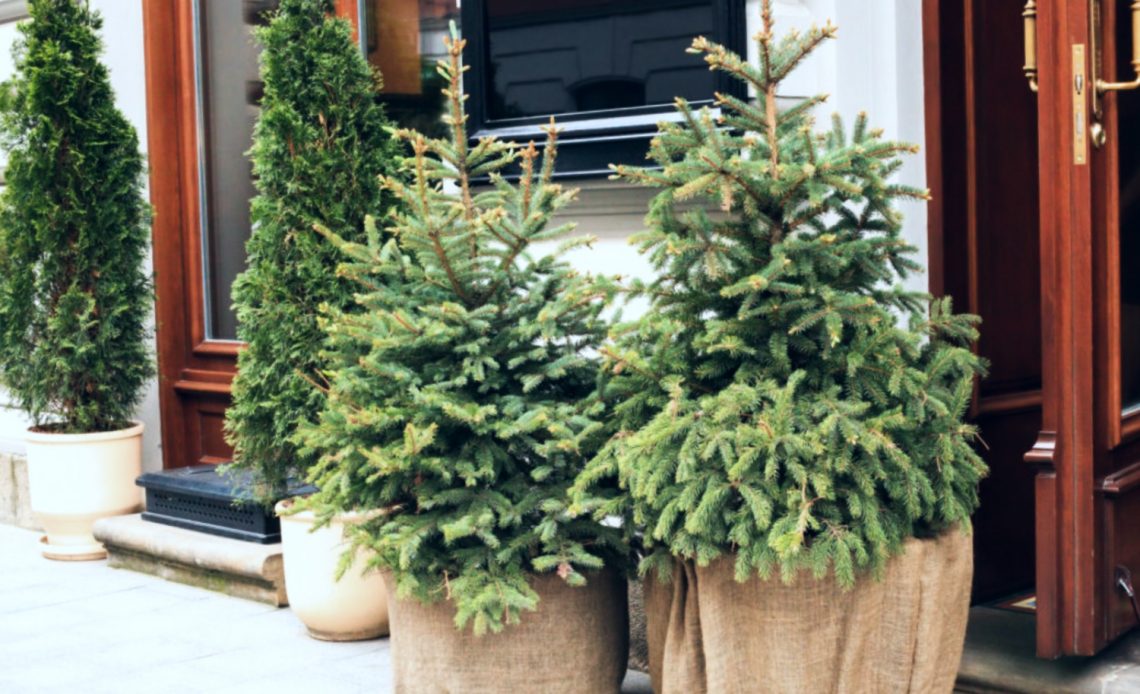

We’re here to help! Wild Yards is a completely free website that is 100% dedicated to helping you create a wildlife-friendly, sustainable yard. Read more
WildYards is reader-supported. When you buy a product through a link on our site, we may earn a comission. Every product is independently selected by our (obsessive) editors and our reviews are unbiased and objective. Read more about our mission or our privacy policy.
Trees that are planted in the ground have a huge advantage over potted trees during the winter months. When freezing temperatures come, these trees are protected by a dense layer of soil. Some trees even have a blanket of mulch to insulate their roots. But trees that are grown in containers have limited protection since their root systems are exposed to the cold on all sides. If you live in a region that experiences harsh freezes during the winter months, you’ll need to plant potted trees that can survive cold temperatures and take measures to help them stay warm.
Evergreen trees with needle-like leaves, including Colorado Blue Spruce, Dwarf Mugo Pine, and Spartan Juniper trees, can survive harsh winter temperatures when grown in pots. Insulating pots with burlap and keeping trees in a cool, dry place out of strong winds helps them survive the cold season.
The 5 best potted trees that survive winter
There are a number of trees that can grow well in pots from spring to fall, including Myer lemon trees and dwarf olive trees. But these warm weather-loving plants may suffer from freeze damage if they’re left outside during the winter months. So if your growing zone regularly experiences harsh freezes and heavy snowfall, you’ll need to plant cold-hardy trees so they’ll have a better chance of surviving.
Of course, just because you choose cold-hardy trees for your pots doesn’t automatically mean that those trees will stand up to the cold without any extra effort on your part. You’ll still have to take a few measures to keep them warm. Potted trees are less insulated than trees growing directly in the ground. And because they’re more exposed, they need extra help to stay warm.
But before we talk about preparing your potted trees for winter, let’s look at a few of the best trees that survive winter temperatures more easily than other patio plants.
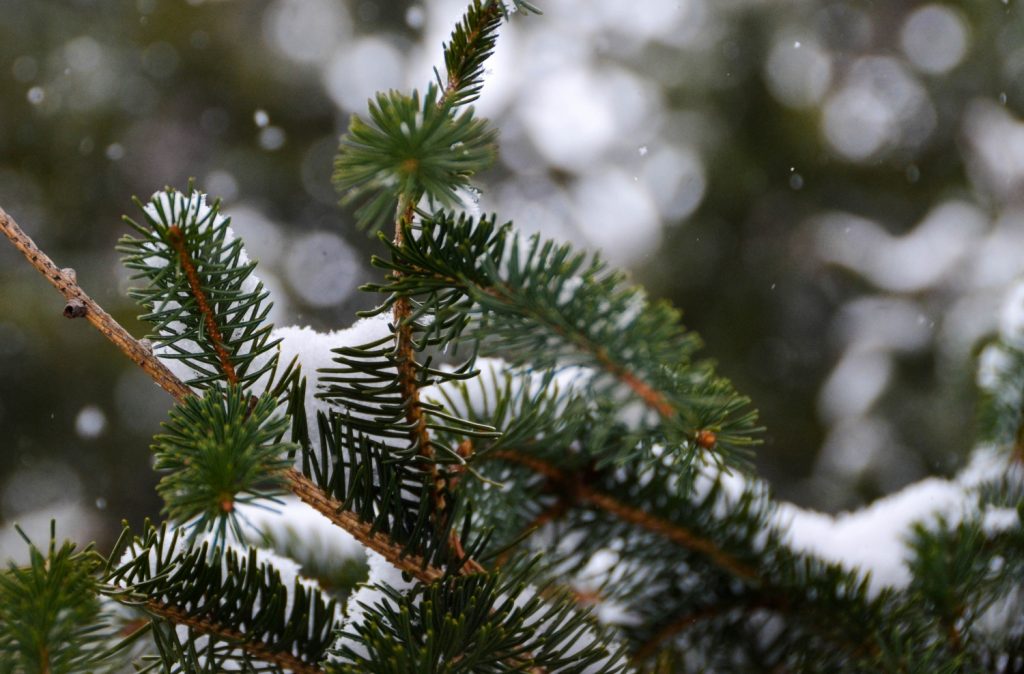
Colorado Blue Spruce (zones 2 through 7)
With its attractive blue evergreen foliage and low care requirements, the Colorado Blue Spruce is an excellent choice for growing in pots over the winter. These trees have a moderate growth rate, growing fast enough to add quick interest to your patios and porches, but slow enough that they’re easy to maintain. Their dense foliage and natural pyramid shape make these trees well-suited to modern and rustic-style landscapes.
Colorado Blue Spruce trees are native to the Rocky Mountains, so they’ve got what it takes to survive the cold, dry winter climate. Grown in the ground, Colorado Blue Spruce trees can reach 30 to 60 feet tall. But, when grown in pots, the trees can easily be pruned to maintain a smaller size.
These trees grow best in full sun. Young trees standing 3 feet tall or less should be watered deeply whenever the soil dries out. But mature established plants are extremely drought-tolerant, and may only require a deep watering every other week, depending on how well their pots drain. The Colorado Blue Spruce is cold hardy to -40 degrees.
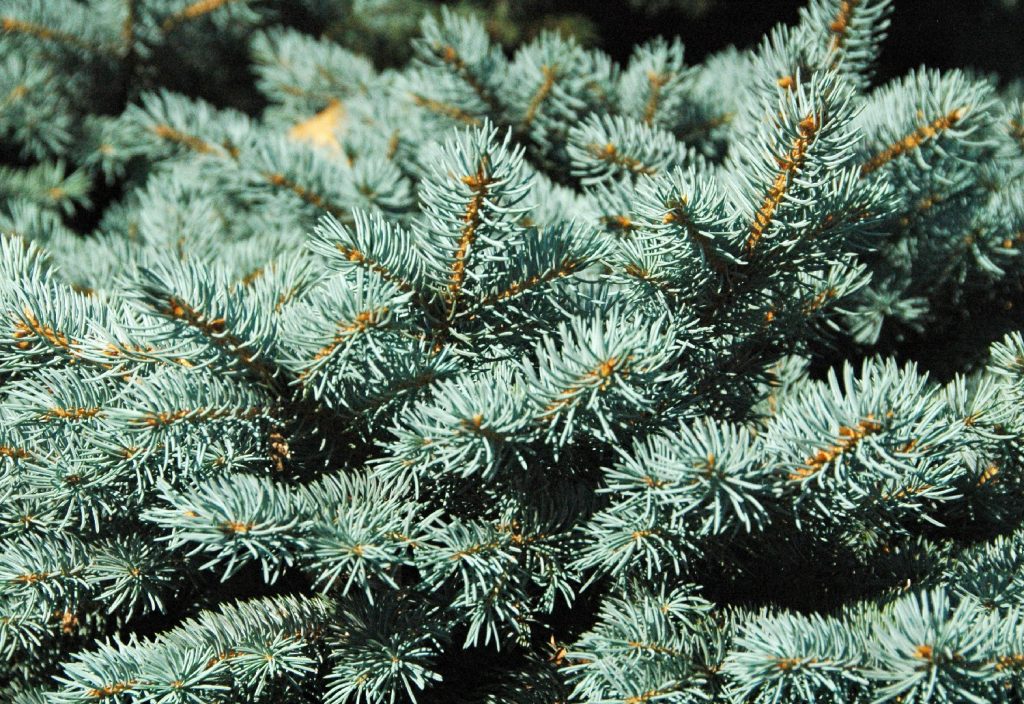
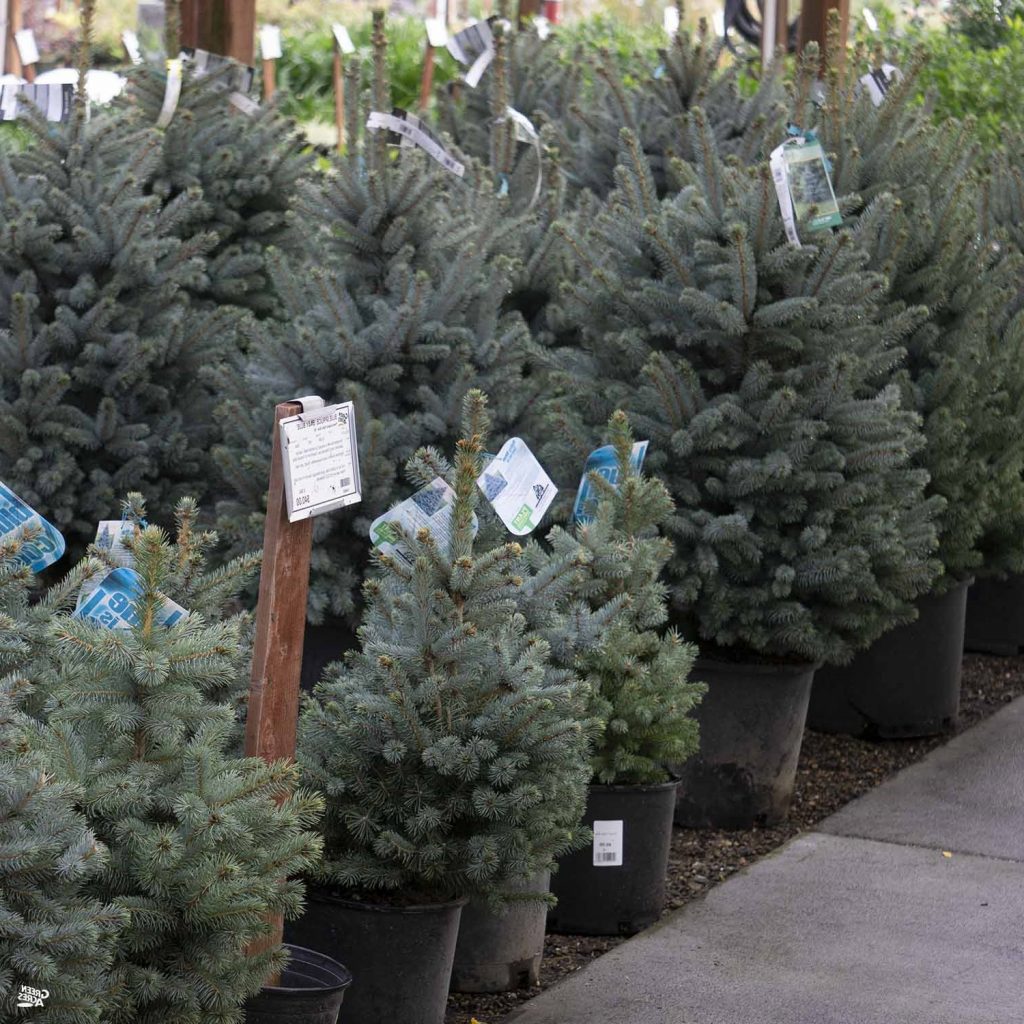
Yoshino Japanese Cedar (zones 5 through 8)
Highly adaptable to a variety of soils and tolerant of cold temperatures down to -10, the Yoshino Japanese Cedar produces fluffy medium-green foliage, giving this Japanese tree a soft appearance. Compared to Colorado Blue Spruce trees, these evergreens are fast-growing, reaching heights of 30 to 40 feet in the ground.
Yoshino Japanese Cedars have a symmetrical growth pattern, taking on a column shape that’s only slightly wider at the base of the plant. These trees are tolerant of windy regions and may develop eye-catching purple foliage with a bronzey finish in cold winter temperatures.
Keep your Yoshino Japanese Cedar in a large pot placed in a location where it will receive full sun. Often, rainfall is enough to keep these plants happy, though they’ll need some help during dry periods to keep their foliage in good shape.
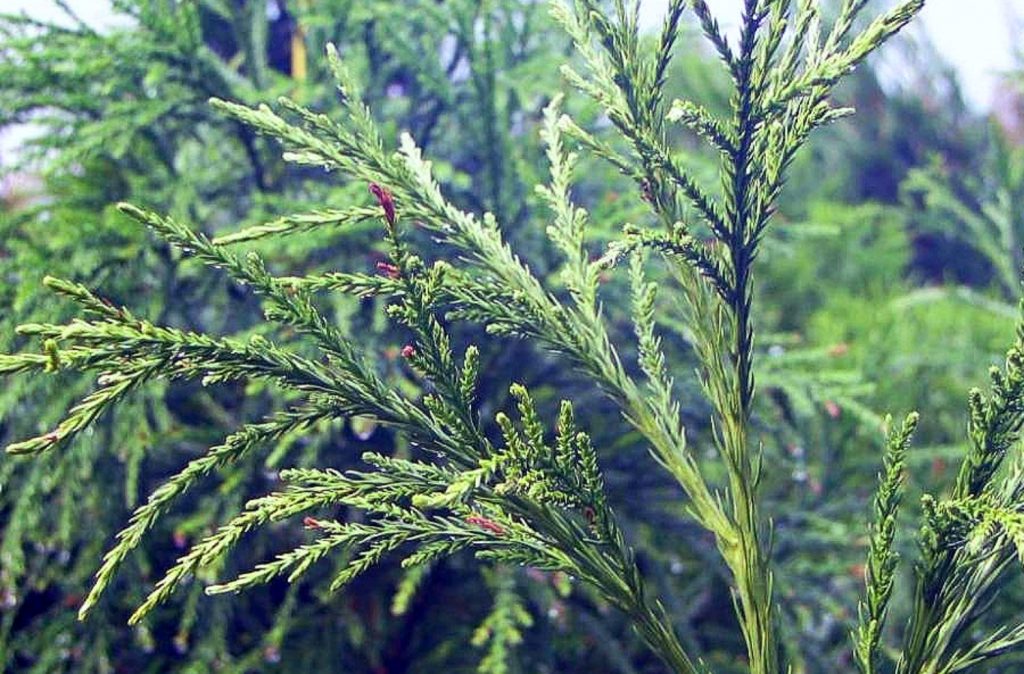
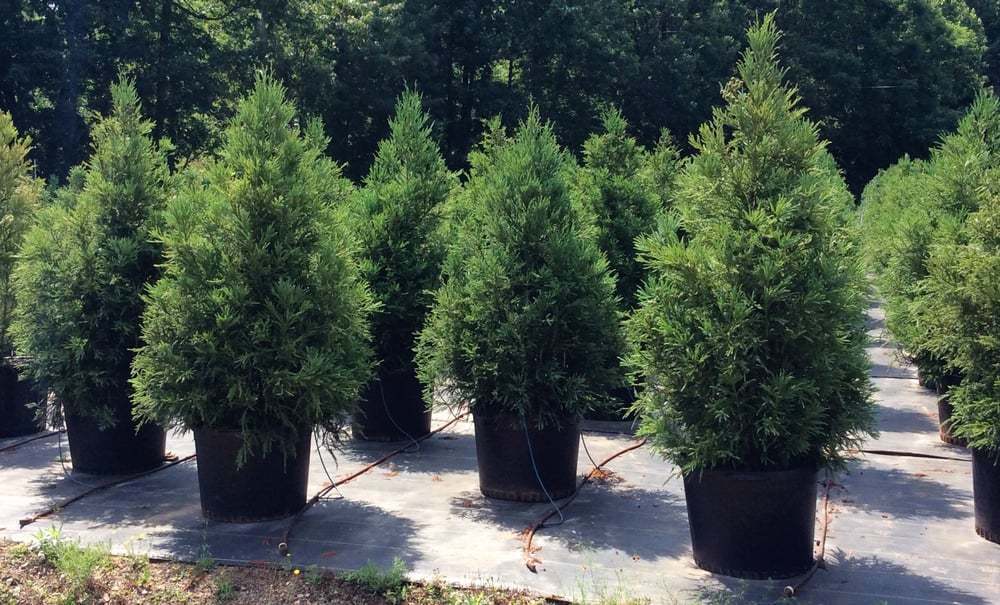
Spartan Juniper (zones 5 through 9)
One of the most popular landscape plants, the Spartan Juniper has a dignified linear shape that makes it perfect for Mediterranean-style landscapes. These trees have symmetrical growth and can be trimmed into a variety of shapes as a topiary.
Spartan Junipers are fast-growing and tolerant of a number of adverse conditions, including droughts, extreme heat, salt-tainted soils, and freezing temperatures. Mature trees stand around 20 feet tall, though potted plants can be trimmed to a more manageable size.
Overall, these trees require very little care. Weekly waterings to moisten the soil is all your Spartan Junipers need to thrive. And because they’re cold-hardy to -10 degrees, they often don’t require any special care during the winter to help them survive.
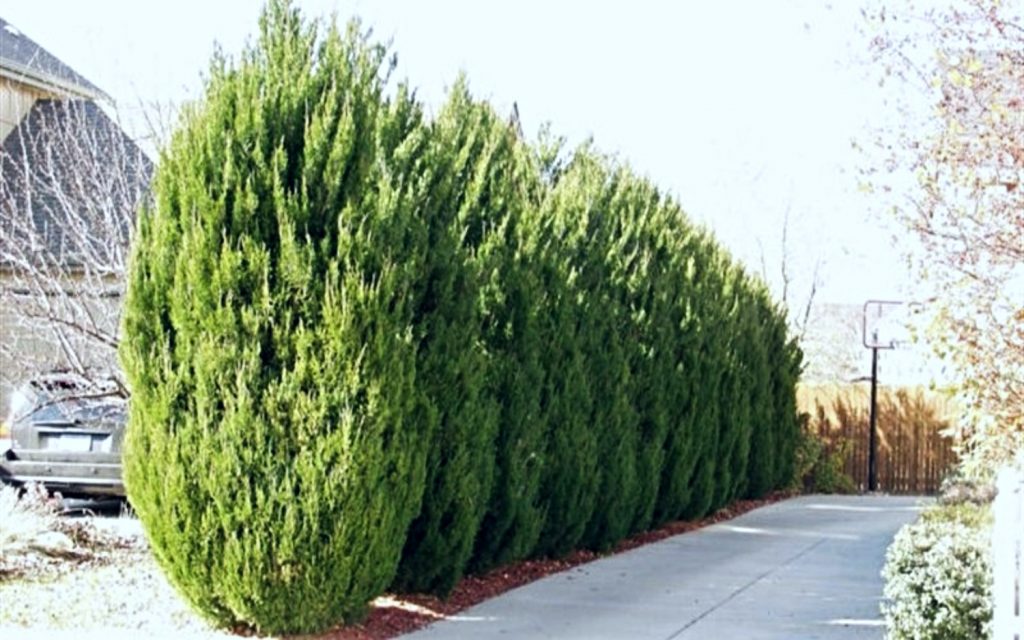
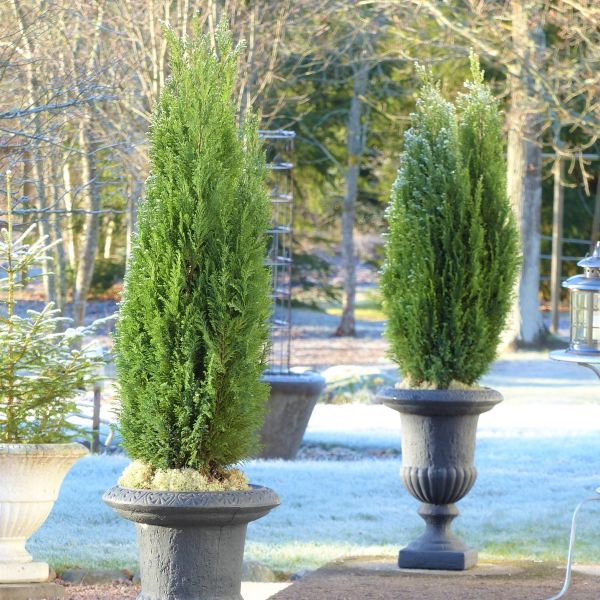
Dwarf Mugo Pine (zones 2 through 8)
This tree’s short stature and horizontal growing pattern make it a popular in-ground tree for forest-inspired landscapes, but you can grow Dwarf Mugo Pines in large pots, too. These trees grow at a slow pace, which makes annual upkeep much simpler since there’s very little to prune away.
This tree’s compact size gives it a shrub-like appearance, a far cry from the previous three tree’s elegant vertical growing patterns. Dwarf Mugo Pine trees max out at 5 feet tall by 10 feet wide. Their outward growth covers the soil below, allowing their roots to retain more moisture.
Dwarf Mugo Pines should be kept in a garage or shed over the winter when temperatures are below freezing for days at a time. These trees can withstand temperatures between 20 and 30 degrees as long as they’re sheltered from the elements.
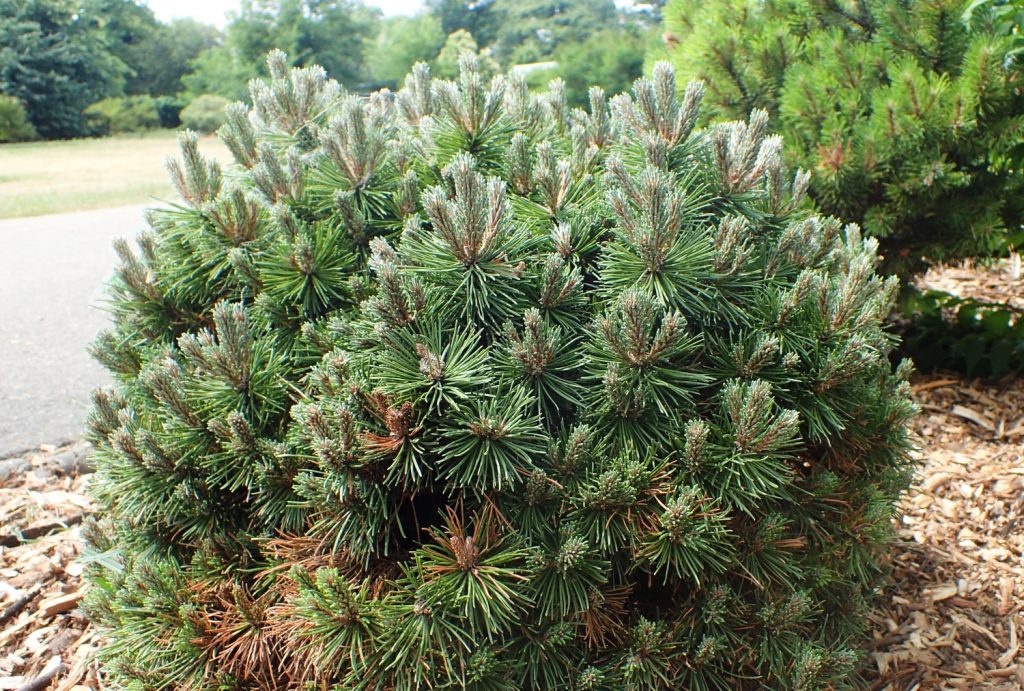
Blue Star Juniper Tree (zones 4 through 8)
The Blue Star Juniper tree only grows 3 feet tall, so it’s the perfect choice for growing in pots. The tree’s standard growth pattern and subtle blue-green foliage are well-suited to topiaries along flower beds and outdoor structures. Their slow growth rate makes them easy to maintain. Simply shape the tree in winter or early spring, and it can take care of itself for the rest of the year.
Blue Star Juniper trees don’t like a lot of fuss. Just plant them in large pots, give them 6+ hours of sunlight every day, and keep their soil evenly moist. These trees are hardy to -20 degrees. So if your growing zone only reaches the lower 30s a few times during the winter, you won’t have to take extraordinary measures to keep your potted Blue Star Juniper alive.
What are the best pots for trees in winter?
Ceramic and terra cotta pots lose heat quickly and crack from water expansion and contraction. Plastic and resin pots can work in areas that experience mild winters. But if your region sees harsh freezes, concrete and wooden pots, like barrels cut in half, will work best. Make sure your pots have drainage holes to allow excess water to escape quickly.
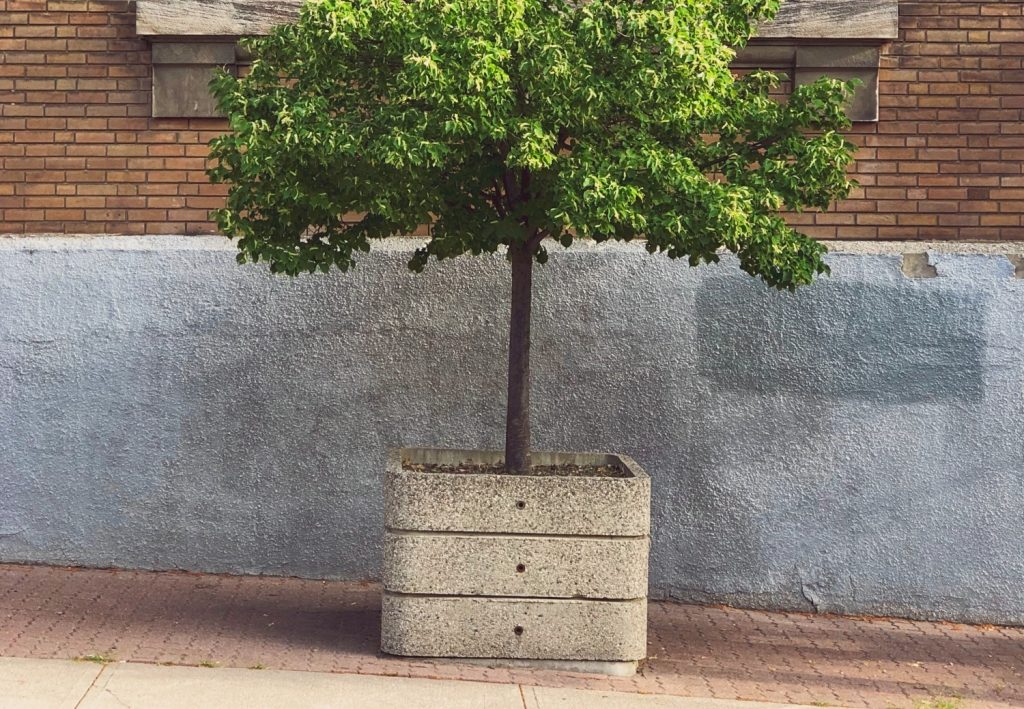
Can potted trees be kept outdoors in winter?
It’s best to keep your potted trees outdoors as much as possible, even during the winter months. If the temperatures are above freezing, then you can keep your potted trees out on your patio or deck. And because the trees are dormant during this period, they don’t necessarily need to be placed in the sun, though this helps keep the plant warmer.
It is important, however, to keep plants out of the winter wind. A moderate breeze won’t hurt anything. In fact, it can actually help the trees develop better root systems. But strong gusts can break branches and stress the plants. So protect your potted trees from severe wind by keeping them in your garage or on the opposite side of your house.
How to prepare your potted trees for winter
Spreading a layer of wood chip mulch or peat moss 3 to 4 inches thick will help insulate your potted trees. You can also use burlap or painter’s cloth to cover the pots. Simply set the pot in the center of the fabric and tie the ends loosely around the tree trunk with twine.
Alternatively, you can dig a hole and set your potted trees at ground level, backfilling over them with soil and mulch. While “planting” your potted trees during the winter and digging them back up again in spring seems counterintuitive, it can help them survive freezing temperatures by mimicking in-ground conditions.
Use plastic, old sheets, or packing blankets to cover potted trees that are too big to move, especially at night when temperatures fall. Be sure to remove the covers when temperatures rise above freezing to disperse humidity. You want to help the plants retain warmth, but if they retain moisture, too, they can develop diseases.
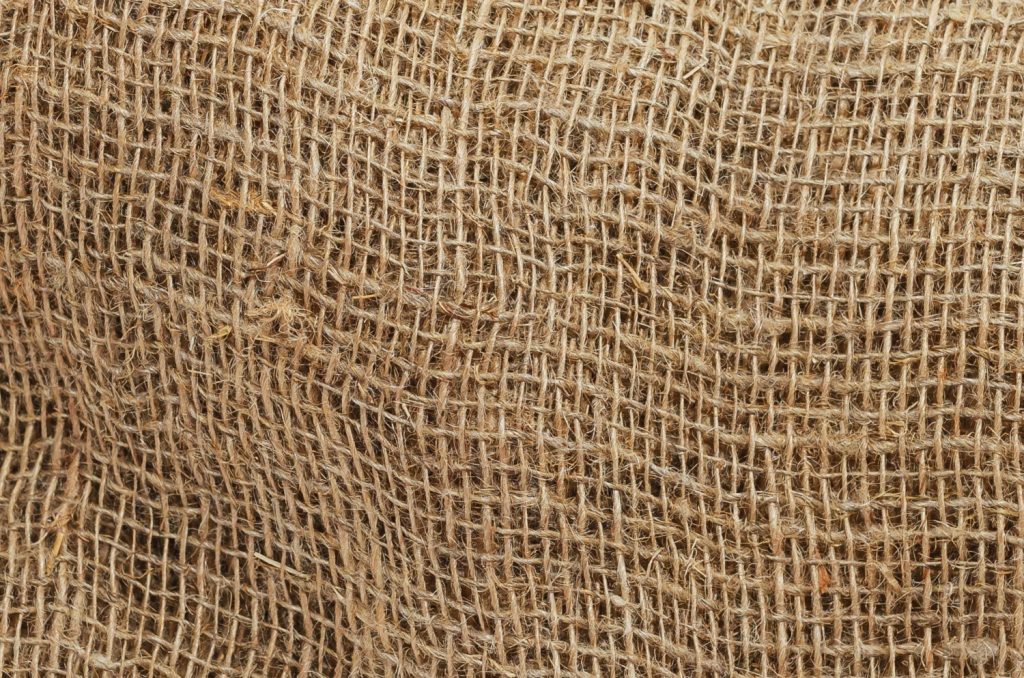
What else can you do to keep trees healthy during winter?
Evergreens are some of the hardiest potted trees that survive winter weather, but they can suffer from extreme water loss during this time. Because evergreens retain their leaves, they lose more moisture over the dry winter months than deciduous trees. So they need regular watering to stay healthy.
Check your potted tree’s soil twice a week, and when it’s dry 3 inches deep, give the tree some water. Be careful not to overwater, though, otherwise, the soil may get too cold. It takes 5 days of freezing temperatures for the soil in your yard to freeze. And if the soil in your potted trees’ containers is overly damp, it will freeze even faster than that.
Overall, winterizing your potted trees isn’t difficult. By choosing cold-tolerant evergreen trees and by employing a few common sense strategies, you’ll help your trees stay warm until the next growing season.
